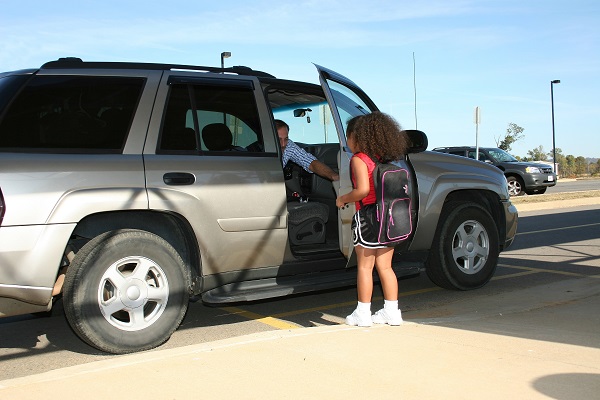
As any teacher who has survived crossing duty can testify, school drop off and pick up times are full of anxious moments as students navigate car parks, duck distracted drivers and weave past illegally parked vehicles.
Schools write to parents with monotonous regularity, pleading for them to mind speed limits, parking regulations and to watch for young pedestrians. “Please do not call your child out into the road or to cross the road rather than use the crossing,” writes one Auckland principal. “Students and parents are to use the crossing. There have been some near misses which were totally avoidable.”
In New Zealand, boards of trustees are responsible for managing traffic flows in and around schools. The Ministry of Education says students should be encouraged to walk, cycle or bus to school in order to reduce congestion. And the BOT should put together a travel plan to manage traffic. This should address:
“Involve the community in developing the plan. It will get people thinking about ways to reduce traffic. Develop a system for dropping off and picking up students,” says the Ministry.
“Make sure your travel plan includes a system for dropping off and picking up students.
For busy urban schools, traffic needs to be coordinated in and around the school during peak times. If not, drivers might park illegally in the neighbourhood which is unsafe and will irritate neighbours.”
A system might include:
One of the biggest headaches for schools is keeping the staff car park safe for students and yet accessible for drivers. Kyle Dransfield is manager at Highway 1 Intl Limited, suppliers of specialty roading products. Highway 1 distributes product to many schools, both for their driveways and carparks, and for safe travel between home and school.
School driveways and carparks
One way to slow down traffic is the use of speed humps and signage on driveways, says Mr Dransfield. “Specifying a speed limit of say, 10km, is very effective. There is no legal limit, it is at the discretion of the school.”
Another way is to install speed cushions. A speed cushion is like a speed bump but it allows emergency vehicles to access without slowing down to a crawl. The cushion sits in the middle of the lane where, at 1.8m wide, it will slow most vehicles. But because ambulances and fire trucks are wider, the tyres will not touch the cushion so they can continue to travel at speed. Speed cushions are widely used in driveways of hospitals and rest homes.
Mirrors
The use of mirrors for blind corners is effective, says Mr Dransfield. “If your school has a patch where visibility is limited and drivers cannot see what is around the corner, put up a convex mirror so you can see kids and pedestrians.”
Demarcation
Traffic safety measures need not be bulky or expensive. Clearly painted lines to show where cars can and cannot park are practical and cost effective.
Bollards
While these will not keep pedestrians out of vehicle areas, they will keep vehicles out of pedestrian areas so can be useful to designate vehicle-free bays. They are also useful for funnelling traffic into narrow lanes. “You can use bollards to take the lane from says 3m to 2.2m and the traffic will naturally slow down.”
Mr Dransfield says wheel stops are a practical way to keep the footpaths clear. Rather than have the footpath partially blocked by car bonnets, the wheel stops will keep vehicles back – and away from pedestrians.
Safety vests
Highway 1 sell a lot of safety vests to walking school buses and rural schools. “In some areas, the lighting isn’t good or maybe there’s no footpath so wearing a high visibility vest is another way to help students stay safe.
At road safety charity Brake, director Caroline Perry recommends that schools have a road safety policy in place to promote the safety of students as they travel to and from school, and whilst on school trips. “It’s a good idea to detail within the policy what is expected of both students and parents/carers,” she says.
You can also use the policy to:
– Identify where parents/carers should drop off/pick up their children, including any areas parents/carers should not drop off/pick up their children.
– Provide safety advice if transporting their child by car (e.g. only letting their child get into/out of the car on the footpath side, using appropriate child restraints).
– Remind parents/carers about factors such as speed and reversing when driving close to the school. Children sometimes make mistakes. They cannot effectively judge the speed a car is travelling at, so slowing down means you have a better chance of stopping in time if a child makes a mistake and runs onto the road.
A new report from the University of Auckland’s Our Voices Project asks young people what…
The government has opened a tender for new standardised assessment tests, leaving educators shocked and…
Early in her career, Kiri Turketo found inspiration in an unlikely source. In this Principal…
Real stories of dedication, challenges, and triumphs from educators in NZ. Part six comes from…
Is fast furniture impacting your school's environmental footprint? We explore eco-friendly solutions to reduce furniture…
A new report from the New Zealand Initiative argues we need a stronger and clearer…
This website uses cookies.